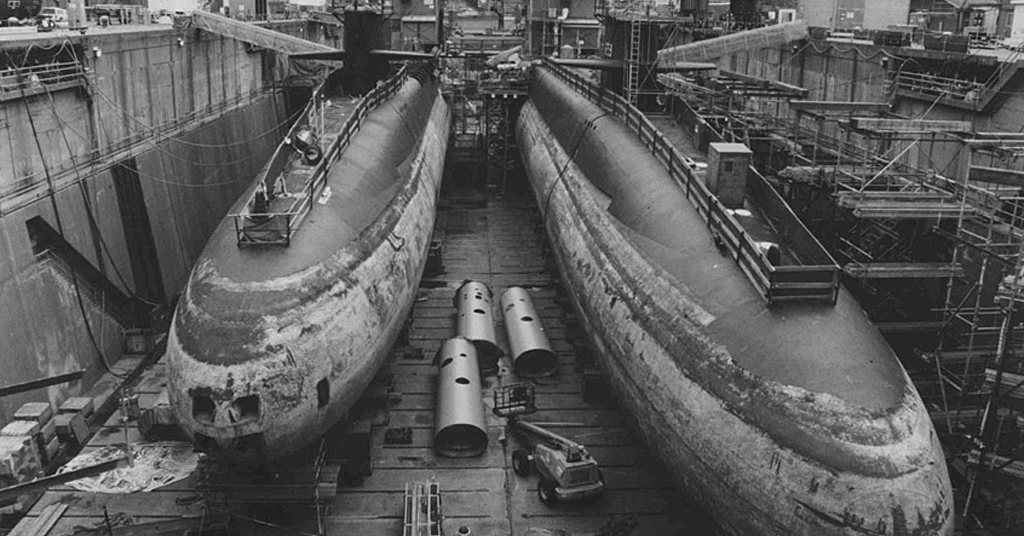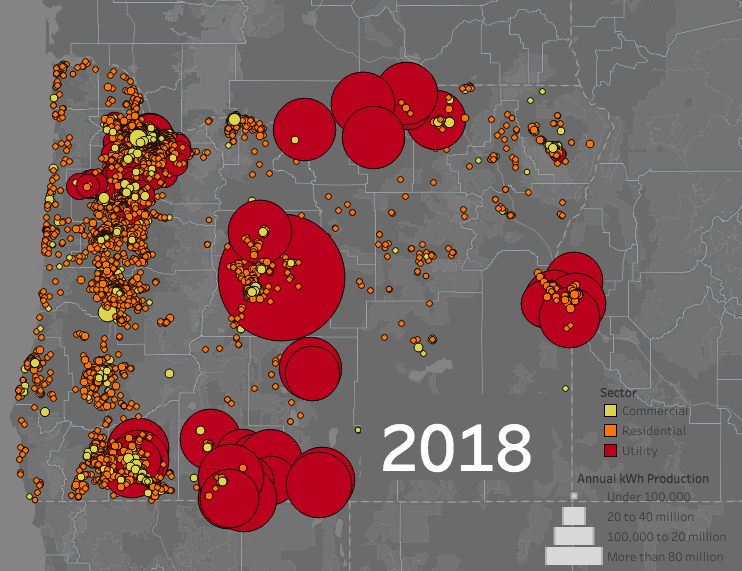By Dac Collins. Jan. 24, 2019. Last year, the U.S. Dept. of Energy (DOE) announced a proposal to reclassify some of the high-level radioactive waste at the Hanford Nuclear Reservation as lower-level waste. Backlash was immediate, and the 60-day public comment period that was announced by the Dept. on Oct. 10 opened up a veritable floodgate of negative responses, forcing the DOE to extend this comment period until January 9.
During that time, the DOE received a flurry of objections from the state governments of Oregon and Washington, and from thousands of private citizens and a number of non-governmental organizations such as the Natural Resource Defense Council, Columbia Riverkeeper and Hanford Challenge.
An unsightly and hazardous reminder of our nuclear legacy, the Hanford site currently holds 60% of the nation’s most dangerous nuclear waste and is known as one of the most contaminated sites in North America. 56 million gallons of the long-lived, radioactive sludge is currently being stored at the site’s C Farm in 177 underground storage tanks—aging tanks that tend to leak from time to time, contaminating groundwater and the nearby Columbia River with Technetium-99, Iodine-129 and other radionuclides.
Lawmakers and local watchdogs are worried that the federal government’s proposal could allow the DOE to fill these tanks with grout and bury the waste there indefinitely. (Technetium-99, by the way, has a half-life of 210,000 years, while Iodine-129 has a half-life of 15.7 million years.) This would be a serious departure from the current plan, which involves binding up the radioactive waste in glass and transferring it to a a permanent disposal site far away from the river.
Since cleanup efforts began in 1989, approximately 45 billion dollars have been spent in the process. And while the DOE claims that “considerable progress has been made at Hanford” over the past 30 years, the Department also admits that “nowhere in the DOE Complex is cleanup more challenging than at the Hanford Site in southeastern Washington.” So why would a federal agency that fully understands both the complexity and the hazards associated with the cleanup try to downplay it?
According to some critics of the DOE’s proposal, the short answer is: to save money.
“It is incredibly expensive, and it is doing nothing but getting more expensive,” says Ken Niles, Assistant Director of Nuclear Safety for the Oregon Department of Energy (ODOE). “Plans that have been pursued for years in terms of tank waste treatment are not going well, and the costs continue to increase. So I think the main impetus for the U.S. Dept. of Energy in doing this is to try and reduce the cost.”
The ODOE is concerned that by reclassifying the waste at Hanford as lower-level, the federal government would effectively give itself unilateral authority to decide what is high-level waste and what isn’t.
“It takes away existing requirements, for example, to remove key radionuclides,” Niles says. “It takes away oversight from the NRC (Nuclear Regulatory Commission) and from the State. And it leaves it up almost entirely up to the DOE and its own discretion to make those decisions.”
Washington State Governor Jay Inslee echoes these concerns in a letter that he co-wrote with State Attorney General Bob Ferguson. “We write in strong opposition to the U.S. Department of Energy’s proposal to change the interpretation of ‘high level waste’,” the letter begins.
“DOE has a responsibility to Washington communities and tribes to cleanup their nuclear site in the safest way possible,” it continues. “We have strong concerns with any proposal that will allow DOE to unilaterally reclassify high level waste to low level waste without input or consent from those most impacted.”
Washington Dept. of Ecology spokesman Randy Bradbury says the most disturbing aspect of the proposal is the lack of transparency between federal and state governments.
“One of our concerns with the whole process,” Bradbury explains, “is that they haven’t said, ‘here’s the reason why want to do this’.”
Maia Bellon, Director of the Washington Dept. of Ecology, agrees, stating in her letter that it is “disturbing” that the DOE has “thus far declined in meaningful dialogue on how its new interpretation would apply at any given site.”
“DOE’s new interpretation could amount to DOE putting grout on the most dangerous waste in the country and walking away,” Bellon writes. “Washington is unwilling to allow future generations to bear this risk simply because DOE has concerns with costs.”
The U.S. Dept. of Energy did not respond to requests for comment.
So for now, governments (and residents) of Oregon and Washington simply have to wait for the DOE to issue a decision regarding how it will move forward. And unless the federal government drops its proposal altogether, it seems pretty clear that factions on both sides of the river will remain committed to putting the health of our environment and of future generations above any financial concerns.










